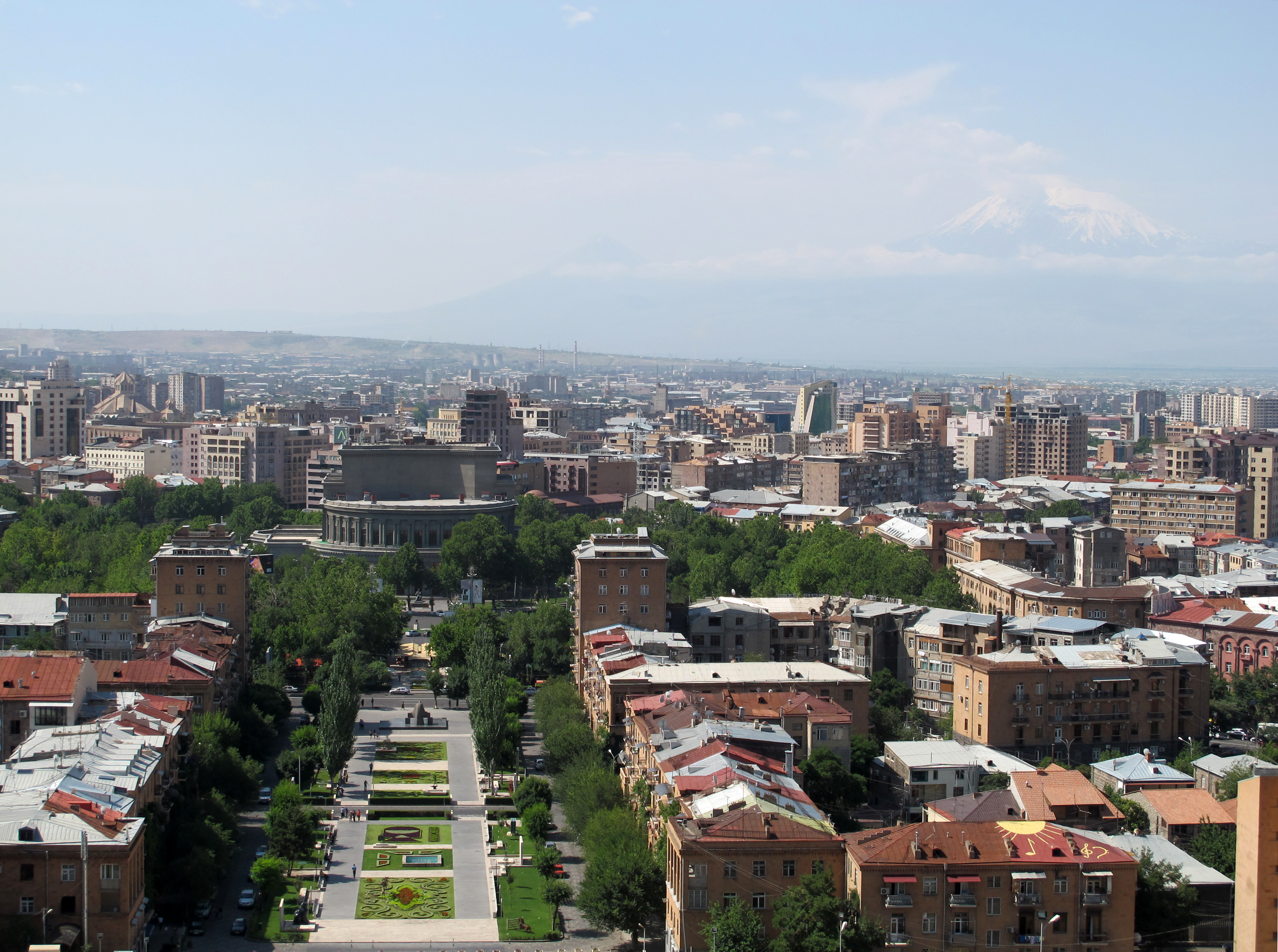| Revision as of 05:14, 20 August 2004 view source193.77.86.2 (talk) sl:← Previous edit | Revision as of 06:39, 20 August 2004 view source Fpga (talk | contribs)576 edits added a photo of ErebuniNext edit → | ||
| Line 7: | Line 7: | ||
| ==History== | ==History== | ||
| ] | |||
| Archaeological evidence indicates that a military fortress called ''Yerbuni'' stood on Yerevan's site as far back as the ]. Since then the site has been strategically important as a crossroads for the ] routes passing between ] and ]. It has been called Yerevan since at least the 7th century A.D., when it was the capital of Armenia under ]n rule. | Archaeological evidence indicates that a military fortress called ''Yerbuni'' stood on Yerevan's site as far back as the ]. Since then the site has been strategically important as a crossroads for the ] routes passing between ] and ]. It has been called Yerevan since at least the 7th century A.D., when it was the capital of Armenia under ]n rule. | ||
Revision as of 06:39, 20 August 2004

Yerevan (Երևան in Armenian) is the largest city (1989 pop. 1,201,539) and capital of Armenia. It is situated on the Hrazdan River.
Yerevan is a leading industrial, cultural, and scientific centre in the Caucasus region. It is also at the heart of an extensive rail network and is a major trading centre for agricultural products. In addition, industries in the city produce metals, machine tools, electrical equipment, chemicals, textiles, and food products.
Educational and cultural facilities in Yerevan include a university, the Armenian Academy of Sciences, a state museum, and several libraries. A major tourist attraction is the ruins of a 16th-century Ottoman fortress. Zvartnots Airport serves Yerevan.
History

Archaeological evidence indicates that a military fortress called Yerbuni stood on Yerevan's site as far back as the 8th century BC. Since then the site has been strategically important as a crossroads for the caravan routes passing between Europe and India. It has been called Yerevan since at least the 7th century A.D., when it was the capital of Armenia under Persian rule.
Due to its strategic significance, Yerevan was constantly fought over and it passed back and forth between the dominion of Persia and the Ottomans for centuries. In 1827 it was taken by Russia and formally ceded by the Persians in 1828. After the 1917 Russian revolution it enjoyed three years as the capital of independent Armenia, and in 1920 became the capital of the newly formed Armenian Soviet Socialist Republic, a territory of the Soviet Union. With the collapse of the Soviet Union, Yerevan became the capital of the independent Republic of Armenia in 1991.
